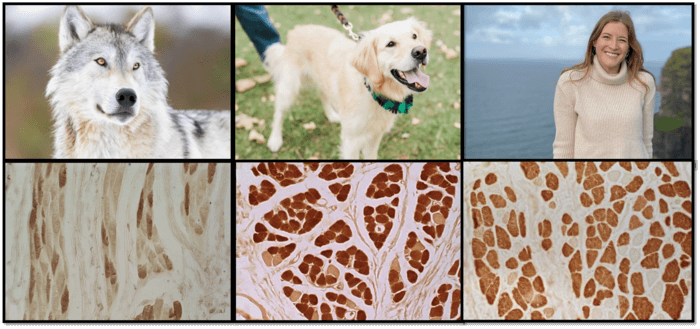PHILADELPHIA, Pa. — How did dogs get those irresistible puppy dog eyes? It turns out it took a lot of effort by our ancestors. Researchers believe humans selectively bred the first domesticated dogs thousands of years ago to achieve those big sad eyes no dog owner can say no to!
Their recent study explains that adoring and pleading expressions in dogs are actually intended so they can make more human-like faces. The more they pull off that “puppy dog eye” trick, the more treats they received — and the more humans bred them in order to keep that desirable trait going.
The team adds it likely took thousands of years of selective breeding to achieve this facial expression-forming trait. In the study, researchers analyzed the anatomy of tiny muscles used to form facial expressions called mimetic muscles.
In humans, these muscles predominantly feature “fast-twitch” myosin fibers that contract quickly but also fatigue quickly. This explains why we can form facial expressions rapidly but not hold them for long. Muscle cells with more “slow-twitch” fibers are more efficient for long, controlled movements and don’t tire as quickly.
For the study, researchers compared the myosin fibers in facial muscle samples from wolves and domesticated dogs. The results revealed that, like humans, both dogs and wolves have facial muscles that are mostly fast-twitch fibers, but wolves have a higher percentage of slow-twitch fibers relative to dogs.
Barking and howling take different kinds of muscles
Having more fast-twitch fibers allows greater facial mobility and faster muscle movement, enabling small movements such as a raised eyebrow and the short, powerful muscle contractions involved in barking.
Slow-twitch fibers, on the other hand, are important for extended muscle movements such as those wolves use when howling. Dogs also have an additional muscle that is absent in wolves and contributes to the “puppy-dog eye” expression.

(CREDIT: Anne Burrows, Duquesne University, top images copyright iStock.)
“Dogs are unique from other mammals in their reciprocated bond with humans which can be demonstrated through mutual gaze, something we do not observe between humans and other domesticated mammals such as horses or cats,” says Professor Anne Burrows of Duquesne University in a media release. “Our preliminary findings provide a deeper understanding of the role facial expressions play in dog-human interactions and communication.”
“These differences suggest that having faster muscle fibers contributes to a dog’s ability to communicate effectively with people,” the study author adds.
“Throughout the domestication process, humans may have bred dogs selectively based on facial expressions that were similar to their own, and over time dog muscles could have evolved to become ‘faster,’ further benefiting communication between dogs and humans.”
The research team presented their findings at the American Association for Anatomy’s annual meeting during Experimental Biology 2022.
South West News Service writer Joe Morgan contributed to this report.

